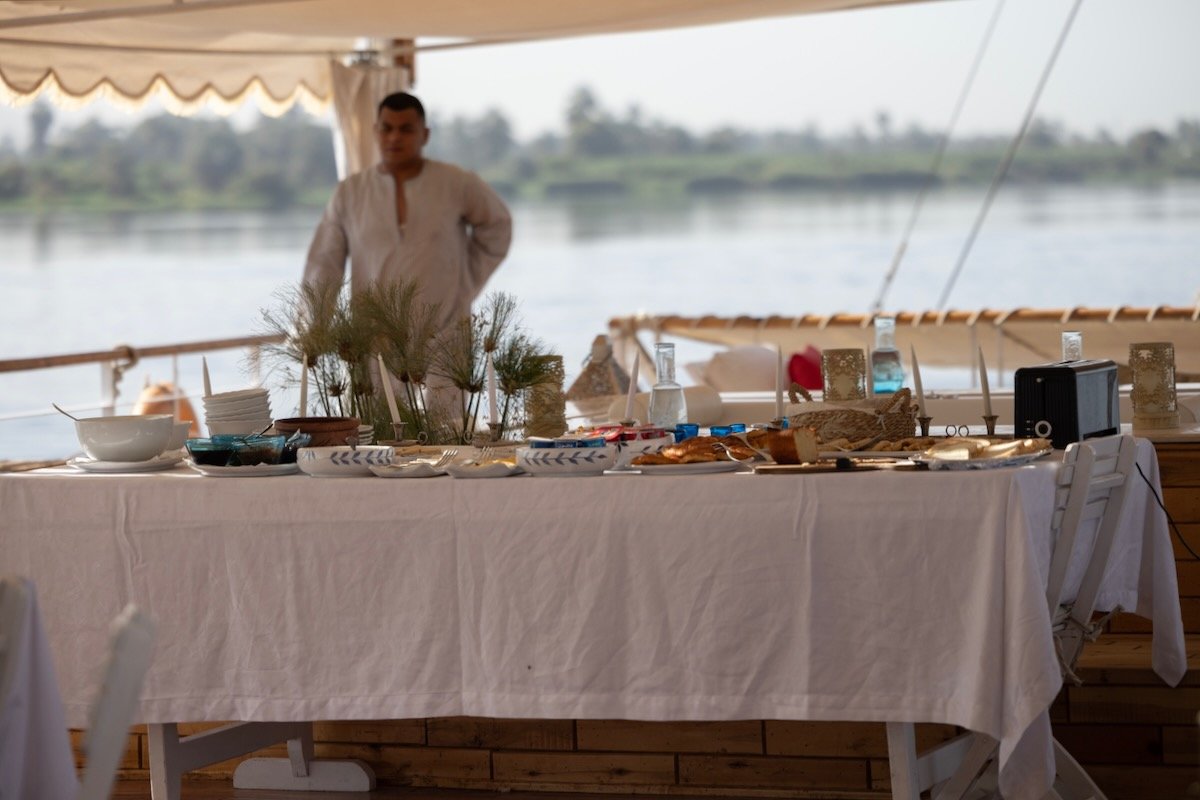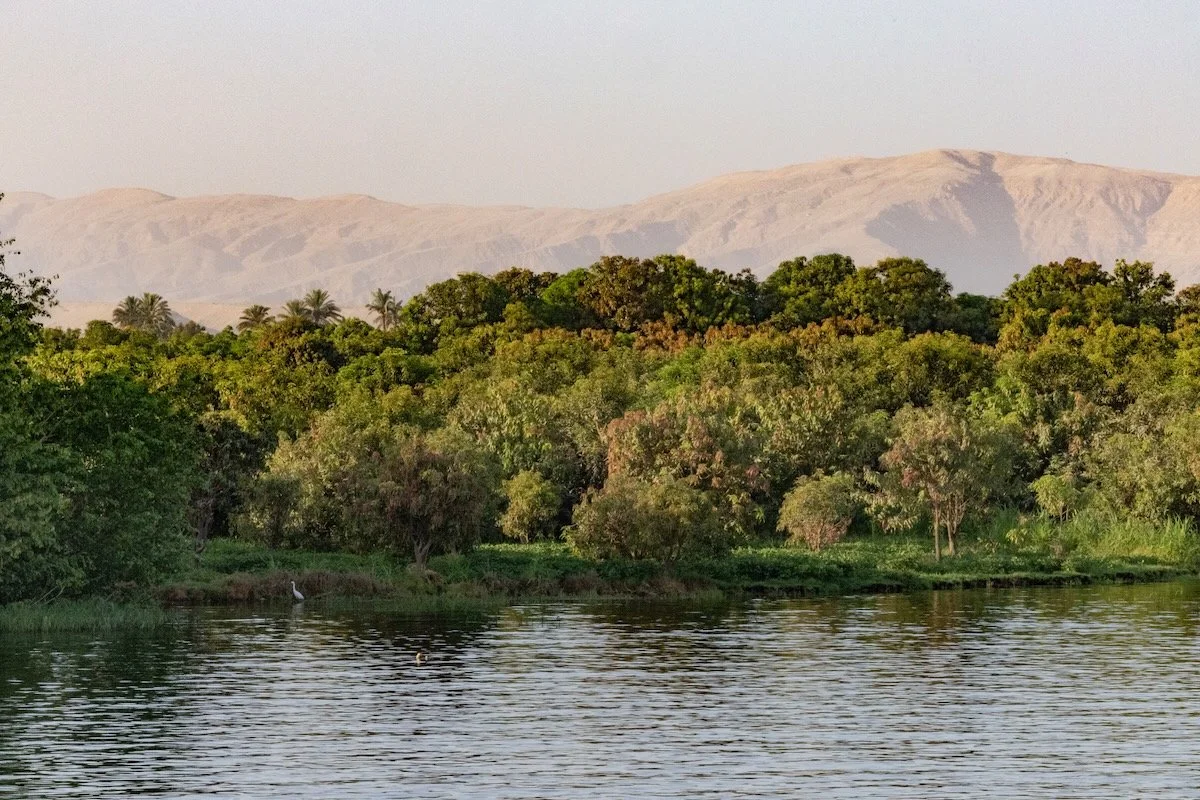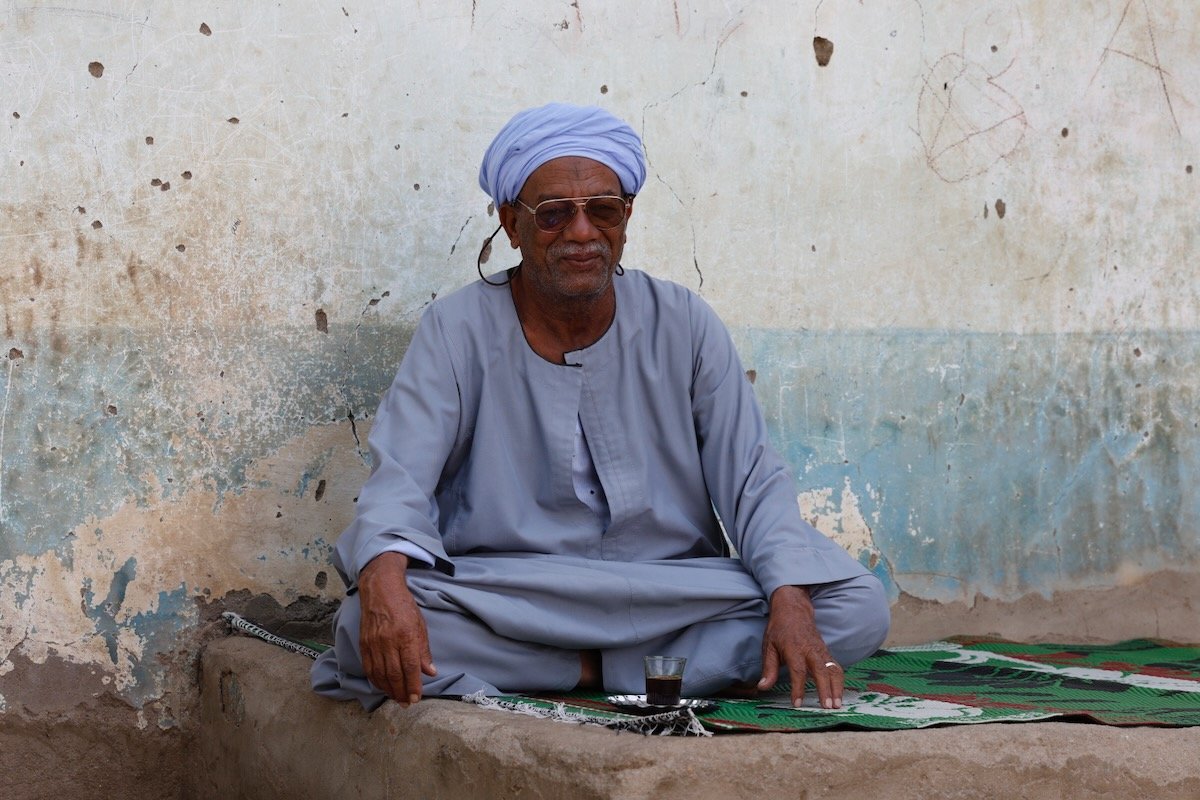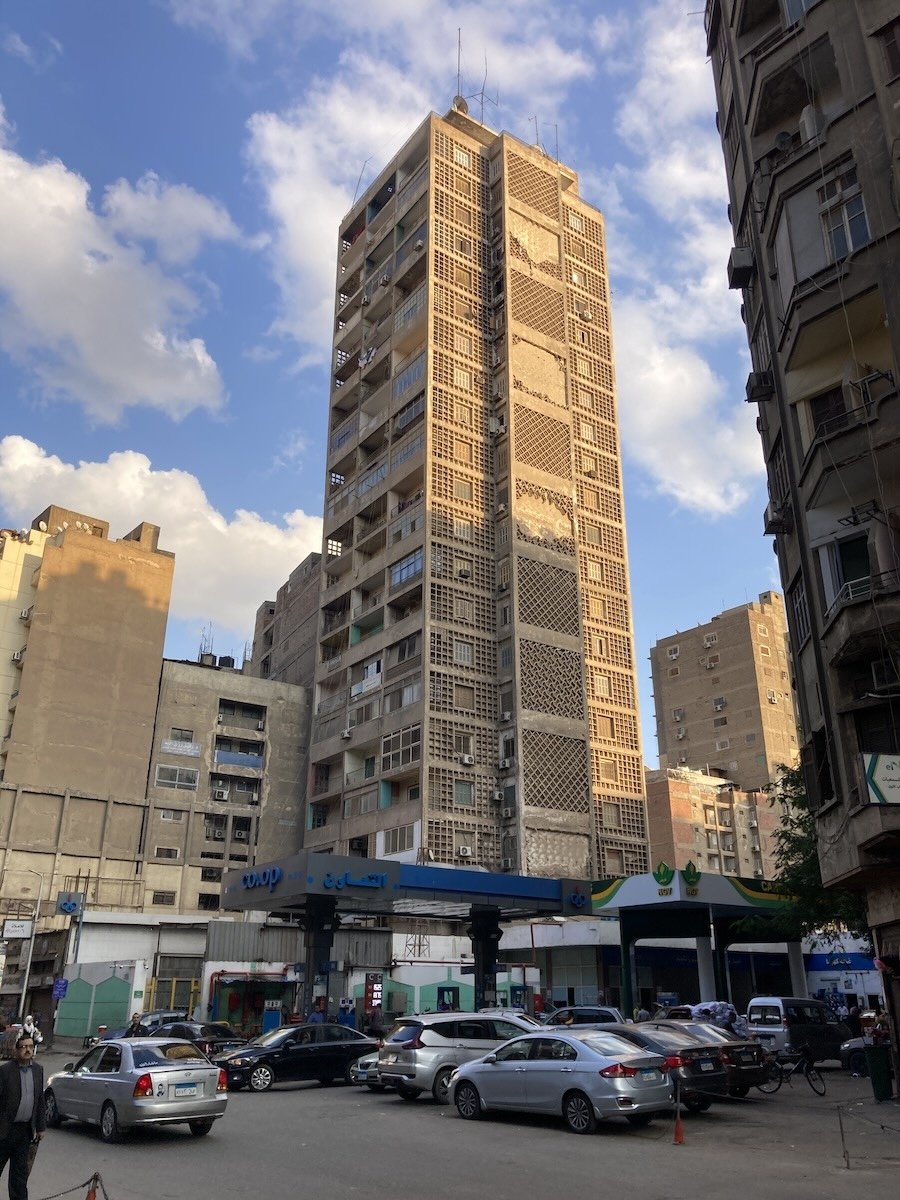Cruising down the Nile
The Nile. I was born along its banks. I’d flown over great lengths of it. But I’d never seen it up close. So I eagerly accepted an invitation from Lazuli Nile Cruises to join a dozen or so other journalists for a six day cruise up the river from Luxor to Lake Nasser the first week of June 2024.
Would I have an epiphany moment when I set foot in Egypt, I wondered? I didn’t, although I did find myself hypnotised by the river thinking “it’s my river”! Nevertheless, this first visit back to Egypt since I was a newborn was a real eye-opener.
First, I wondered why I’d never had the curiosity to visit when I’ve had the urge to go to so many other countries that I had no ties to at all.
Second, it struck me hard that here is a country and civilisation – the first that many of us study in primary school – that would never have existed if it weren’t for this one geographical feature: the river. And I can’t think of any other great civilisation that is/was so entirely dependent on a river.
Third, thanks to our amazing guide, Mamdou Kamel, a fluent reader of hieroglyphs, I understood that ancient Egyptian art and the domestic items buried with the pharaohs are a faithful and often amusing record of daily life 4,000 years ago.
And fourth, when I then sat on the deck of our dahabiya (a 19th century, motor-less, two-masted sailing boat which is towed when there’s no wind) and watched life on the river banks glide past, I realised that, apart from the satellite dishes atop many of the mud-brick homes, Egyptian rural life today has changed little in the intervening 40 centuries!! Riding his donkey home at the end of the day, the peasant dressed in his galabeya (aka jellabiya or jalabiya), the ankle-length, loose-fitting, long-sleeved, collarless, traditional garment worn by most men and boys in the villages and small towns along the Nile, would have been a familiar figure to pharaonic artists.
Wally and Jasmina Aziz, who own Lazuli Nile Cruises, came aboard with us for several days. Wally told me he’d been a guide on a bigger boat for four years but in 2001 bought his first five-cabin dahabiya. He now owns nine, all antiques that he’s had restored.
These sailing boats, 41m long, 8m wide, have two decks: the lower cabin deck and the upper deck where all the dining and relaxing takes place. Three of his boats have 10 cabins, one has eight, three have six and two have five. All cabins are doubles with en-suite shower-rooms and toilet (remember to throw toilet paper in the bin provided and not down the toilet!) “We don’t market the boats as luxury but as charming and authentic,” he stressed.
They may not be luxurious but they’re comfortable enough to have been chosen, amongst others, by Kate Winslett, Sharon Stone, Robbie Williams, former French foreign minister Hubert Vedrine, François Fillon whilst he was France’s prime minister, Moroccan-Canadian comedian Gad Elmaleh and Prince Karim Al-Husseini known as the Aga Khan IV.
Doubtless like them, I found my cabin extremely comfortable but some of my colleagues, used to high-end luxury, were surprised at the lack of freebies such as toothbrush, comb, shower-cap etc. in the bathroom. But there was Lazuli-made jasmine/mint/basilica soap and that was all I needed! I would have liked one half of the cupboard to have hanging space that allowed for dresses to hang properly and the lack of hot water for several days was strange but, given the heat, not a real problem.
The cabins all have several sliding windows protected by sliding mosquito screens and shutters set about 60cm above the water level. So at night I would open the windows, keeping the insect screen closed, and the cool air rising from the river meant the room stayed comfortably cool even without air conditioning (switched off at night to avoid noise from the electricity generator).
“The smaller boats are often privatised by families during school holidays,” Wally explained “and because our boats are flat-bottomed and can go anywhere, we can stop wherever the passengers want.” As long as there are at least two people booked on a boat, the journey is guaranteed.
Prevailing winds in Egypt blow from the north so the boats can sail counter-current up the Nile towards the south but need to be towed back north. The tug-boats are also owned by Lazuli. Unfortunately in June there is not really enough wind even for the southern journey, so we were towed in both directions. But the tugs are some distance from the dahabiya so the chugging noise is not a problem.
One of the highlights for me of the six-night trip was the day-long stop at the village of Bisaw with its 900 or so inhabitants. We’d been requested to bring school supplies for the children and were rewarded with drawings and necklaces made with papyrus stalks. We had lunch on the shaded roof-top of a family home prepared by one of the village women. Unfortunately many of us had upset stomachs (the heat? the unaccustomed quantity of vegetables?) so were unable/unwilling to eat much of the food which looked delicious.
We went fishing with the Bisaw fishermen, explored the island with its groves of banana plants, mango-trees, date-palms, fields of alfalfa and clover, saw the hens, goats, ewes, donkeys, buffaloes and cows, went kayaking so I slid silently close to the egrets, the grey and purple herons, watched the pied kingfishers and was able to, finally, check off the last of the birds on my “young ornithologists checklist” that I’ve had since I was a child: the hoopoe. Yay!
I mentioned to Wally that it would be nice to provide a bird book aboard the boat as bird-watching is one of the pastimes on the cruise. Also that it would also be useful to have some books about the temples we were visiting. Mamdou was on the boat with us but he too had the right to rest and so I was loathe to disturb him with questions and would have liked to dip into a book to follow-up on some of what he’d told us during the visits. “What about the internet?” I hear you say. Spotty wi-fi is my answer!
We visited eight sites, sometimes three in a day (Valley of the Kings, Medinat Habu and Karnak Temple all on our second day): that’s a lot of information to absorb and I have to confess that if it wasn’t for the photos I took (hundreds!) I’d get these monuments all somewhat confused.
The one I think I preferred, which we did have to ourselves – apart from the archaeologists on scaffolding doing restoration work – was Esna Temple near Luxor. The temple is bite-sized, its architecture easy to comprehend and the newly restored colours on the dozens of dizzyingly high columns are dazzling.
We’d been warned that it could be hot in June but even the Egyptians said 48°C in the shade was about 10°C hotter than “normal.” Despite getting up pre-dawn so as to be at the tombs or temples early in the morning (many open at 6:00 am), the heat made it difficult to concentrate on Mamdou’s explanations. I think I’ll have to go back in the autumn when it’s a bit cooler and I can be more attentive to what he’s saying!
But what I enjoyed the most, to be honest, was sitting on the deck at daybreak, observing the fishermen at work, the dahabiya personnel (who somehow manage to be kind and very efficient without ever being obsequious) enjoying a cup of tea before getting breakfast ready for the passengers, the extraordinary variety of birds, the villages slowly waking up, a peasant making a small fire to heat up his breakfast on the banks of the river. And in the evenings the women would appear, chatting whilst their children played in the river, their laughter carrying easily over the water It all seemed so timeless.
We spent one day on Lake Nasser, a taster for Lazuli’s new offering: aboard one of its two purpose-built safari-boats (one with three cabins, the other with four) passengers embark on a four-day trip up Lake Nasser to visit four temples, three of which were relocated to save them from disappearing under the rising waters of the lake. We experienced only the first day’s visit to Kalabsha temple and had a lovely lunch aboard the boat.
The temple of Wadi es-Sebua is the objective of day two of the four-day journey; Abu Simbel that of the fourth. The third day is reserved for a visit to Amada temple, the oldest in Nubia, and the only one not to have been moved.
“We don’t cross paths with anyone on this trip,” Wally Aziz told me “and there is no mobile phone connection so we have a satellite phone on the boats for emergencies. We also have a member of the tourist police aboard for the whole trip.” After all, the border with crisis-ridden Sudan is less than 40km south of Abu Simbel.
If you’re going for a cruise up the Nile, you may find the following recommendations useful:
Dress: wear ONLY cotton, linen or silk clothes... including for underwear. Ladies, if you can, don’t bother with a bra because when it’s 50°C you really don’t want anything tight around your body! If desert peoples cover up, it’s for a good reason: the less flesh you expose to the sun the better. Long, loose garments will catch any hint of a breeze and cool you down. I detest having my feet enclosed in the summer but in the dusty temples I was very comfortable with linen or hemp socks (because your feet won’t sweat or get smelly) and my trusty years-old linen and rubber desert boots made by French company Bionat.
Ladies, don’t wear strappy dresses with plunging necklines or shorts that are so short they expose your buttocks. Gentlemen, keep your shirts on. This is a Moslem country. Dress appropriately.
Wear a hat, take a fan, don’t forget the sunglasses or the suncream and take a thermos of water.
Health hints: bring anti-diarrhoea and re-hydration medication.










































